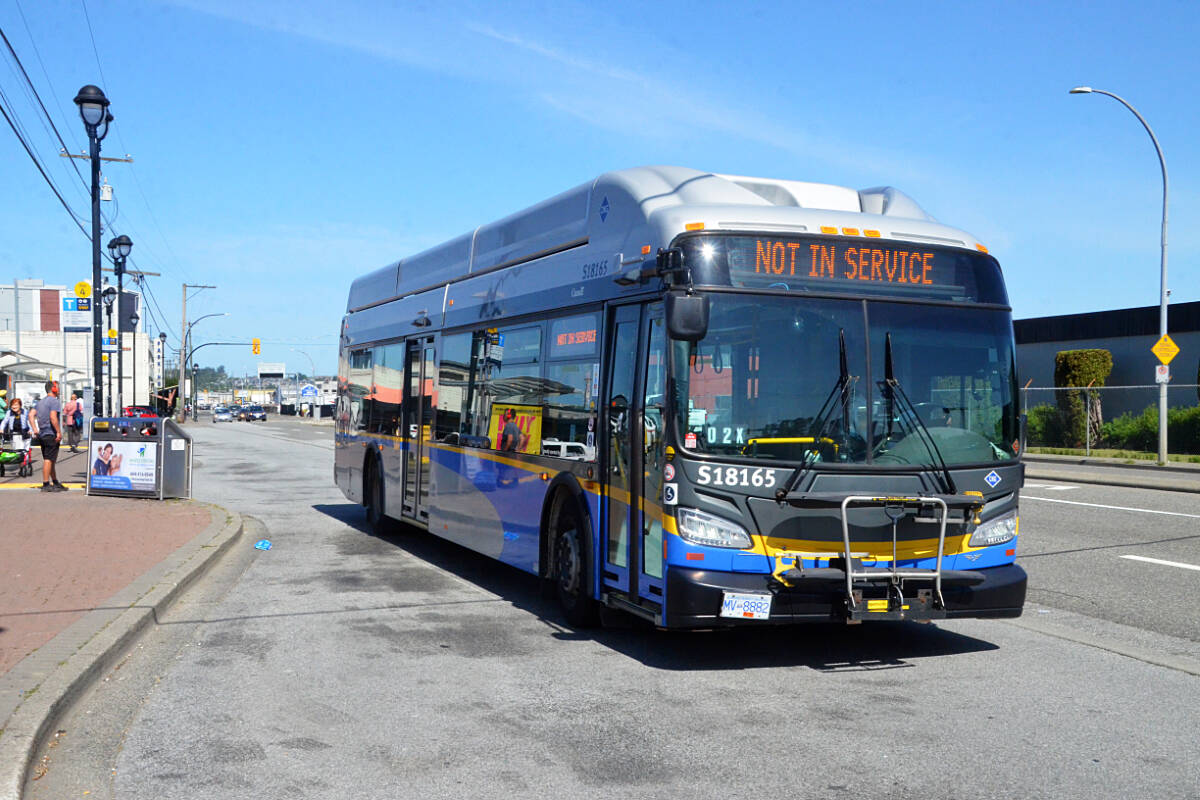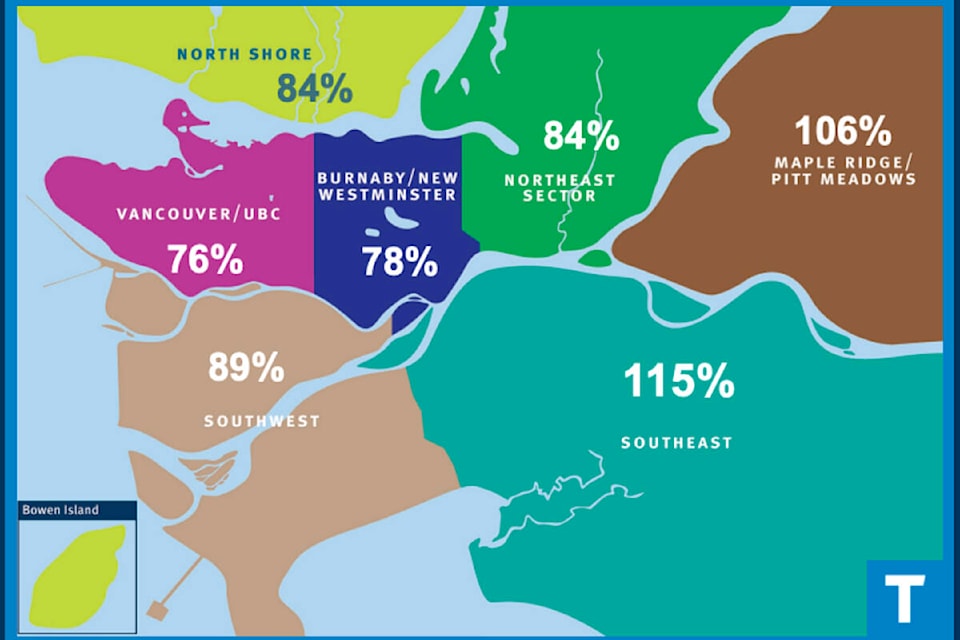Karan Goel uses the bus to get to and from work in Langley, but because – thankfully – his work shifts don’t line up with rush hour, he doesn’t have trouble finding a seat.
“Usually that is not crowded,” he said of his regular route.
But increasingly, buses in Langley, Surrey, White Rock, and North Delta are more crowded. This is one of the few regions where ridership has now exceeded pre-pandemic levels.
The pandemic slashed ridership, first as people lost their jobs, or began working and studying from home, and numbers were slow to recover. More people are still working from home some or all of the time compared to before 2020.
A TransLink management update released on June 1 showed that as of May 15 this year, however, transit journeys were hovering at between 80 and 90 per cent of pre-pandemic numbers across the entire Metro Vancouver area.
The rebound was uneven, however.
Ridership in the southeast region – North Delta, Surrey, White Rock, and Langley – was 115 per cent of pre-pandemic levels.
Only the northeast region, which is made up of Pitt Meadows and Maple Ridge, also saw an increase over 2019 ridership, rising to 101 per cent of pre-pandemic stats.
For comparison, Vancouver/UBC’s ridership is still 76 per cent of 2019 levels, Burnaby/New West is 78 per cent, and the southwest, including Richmond and South Delta, is 89 per cent. However, all regions are seeing a rebound in bus use.
Between March of 2022 and March of this year, bus boardings in the southeast were up by 36 per cent, the highest percentage rate of growth in Metro Vancouver, with 39,000 more weekly boardings.
All regions saw a growth rate in boardings of at least 20 per cent over that period.
Langley City Mayor Nathan Pachal said that’s a bigger problem than it seems.
“We forget that in 2019, transit use was bursting at the seams,” he said. Now it’s even higher.
Buses passing up stops because they’re already full is already happening during peak times, he said.
“We’re at crunch time already throughout the region,” Pachal said.
The TransLink report said that overcrowding during the afternoon rush hour was at 26 per cent in the southeast region by April, the second highest after the 35 per cent rate seen in Vancouver/UBC.
The report warns that the situation will get worse in the fall as transit use increases, and said “opportunities to reduce overcrowding through reallocation will be limited in the fall and beyond.”
Pachal said that mayors in the Lower Mainland have reached out to both Ottawa and Victoria for aid, and are working on a new 10-year vision. But what they really need now is more buses.
“We’re at the point now where there’s no more easy decisions to be made, we just need extra transit,” Pachal said.
READ ALSO: Township wants TranLink to make fast buses on 200th Street a priority
READ ALSO: Petition calls for better safety on Lower Mainland transit
Have a story tip? Email: matthew.claxton@langleyadvancetimes.com
Like us on Facebook and follow us on Twitter.


